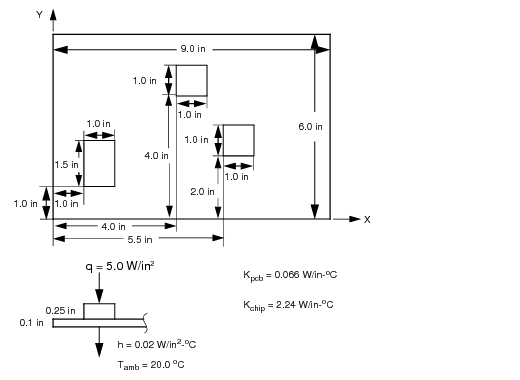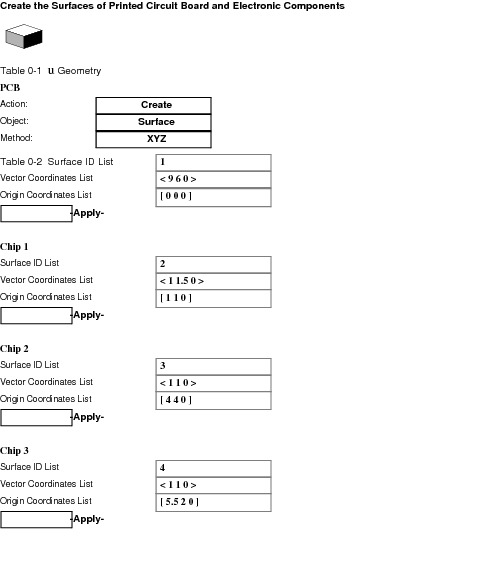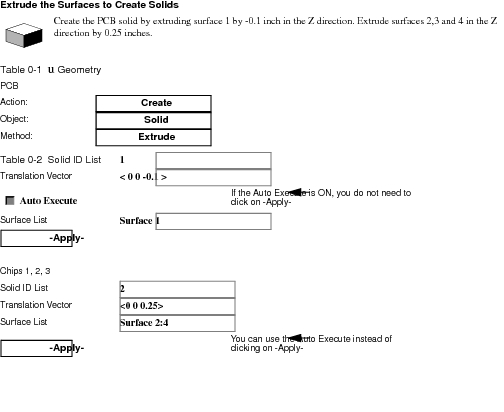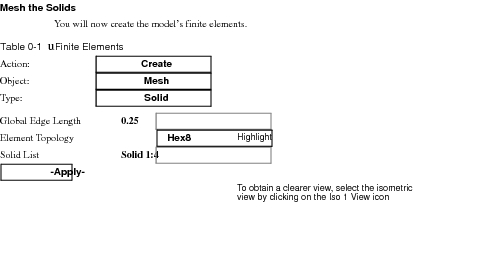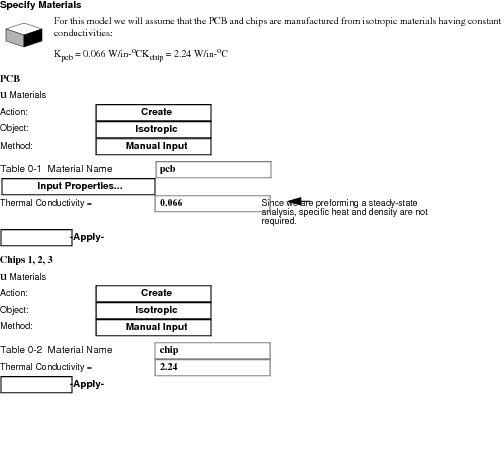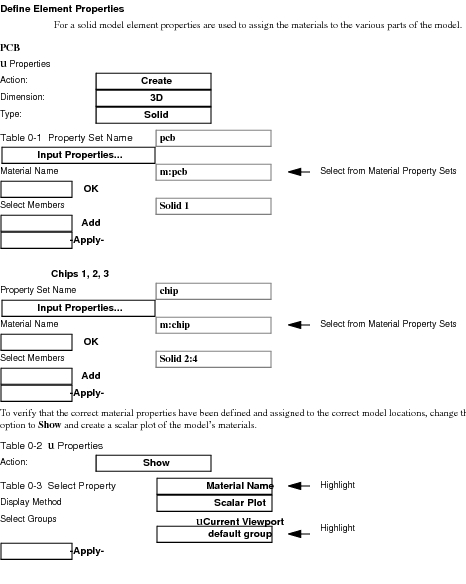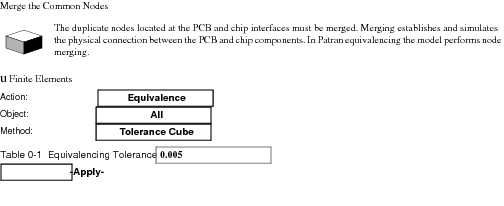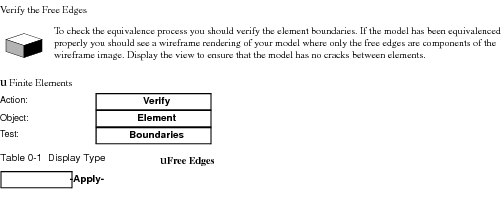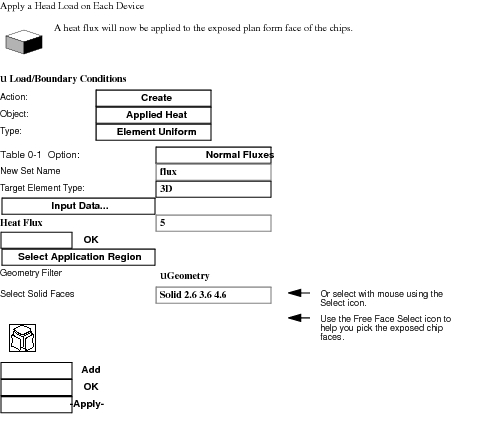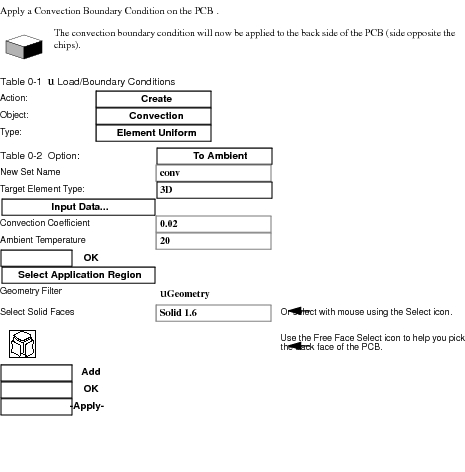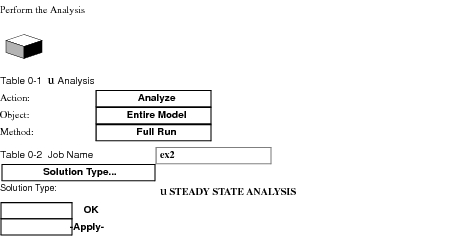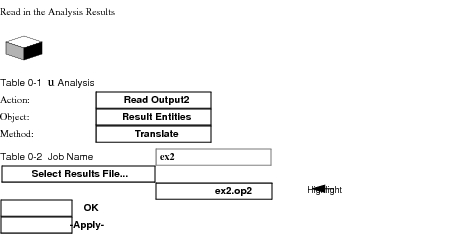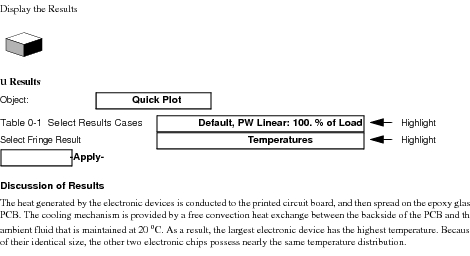XXXXXXXXXXXXXXXXXXXXXXXXXXXXXXXXXXXXXXXXXXXXXXXXXXXXXXXXXXXXXXXXXXXXXXXXXXXXXXXXXXXXXXXXXXXXXXXXXXXXXXXXXXXXXXXXXXXXXXXXXXXXXXXXXXXXXXXXXXXXXXXXXXXXXXXX''"> 7.3 Example 2 - Free Convection on Printed Circuit Board
Figure 7‑2 Printed Circuit Board Assembly
Problem Description
Figure 7‑2 depicts a printed circuit board (PCB) assembly which has three significant chip devices mounted on it. Each chip is generating heat at a rate that is consistent with the application of a heat flux of 5.0 W/in
2 over each device surface area. Heat is dissipated by thermal conduction within the chips and underlying board. Free convection to the ambient environment provides the ultimate heat sink. The ambient temperature for convection is assumed to be 20.0
oC, and a heat transfer coefficient of 0.02 W/in
2-
oC is used to apply convection to the entire assembly surface. We will analyze the printed circuit board to determine the device temperatures so that they can be compared to manufacturer allowables.
Modeling
This example demonstrates the modeling of a printed circuit board with multiple components. We will create surfaces for PCB and electronic devices, extrude the surfaces to generate 3D solids, specify properties, apply thermal loads and boundary conditions, and then perform a steady-state analysis.
